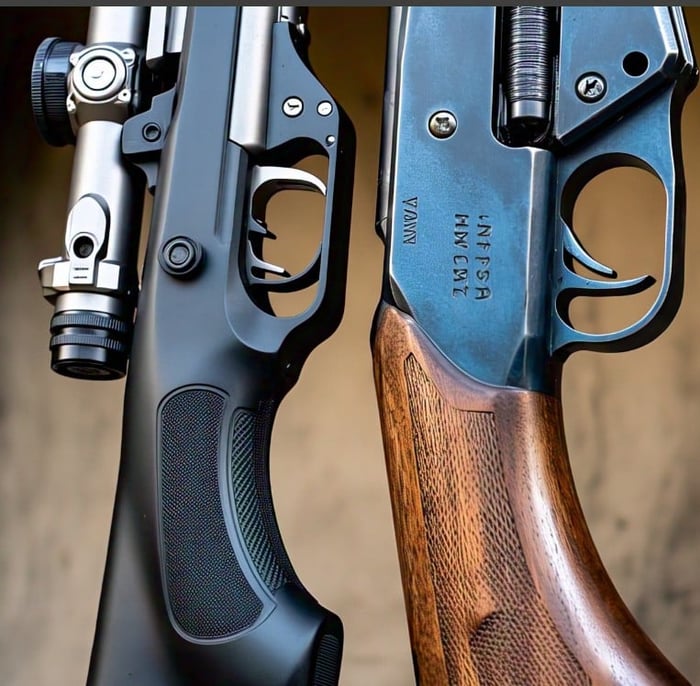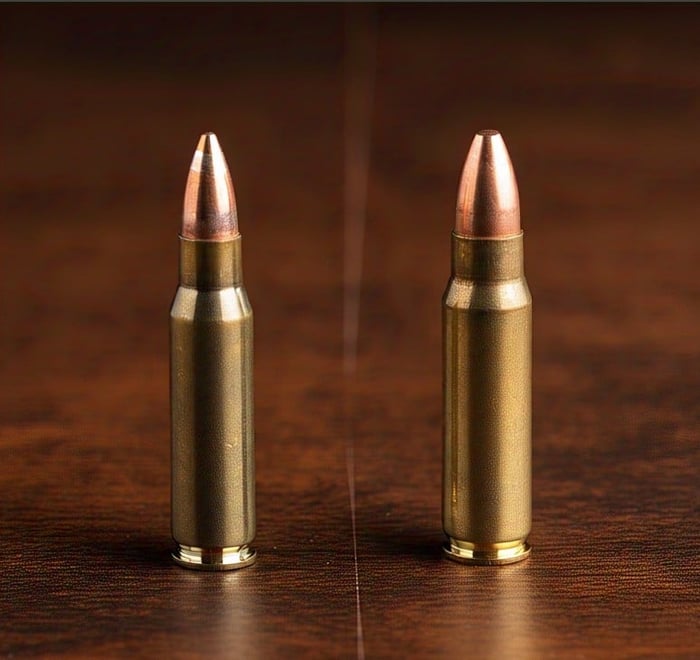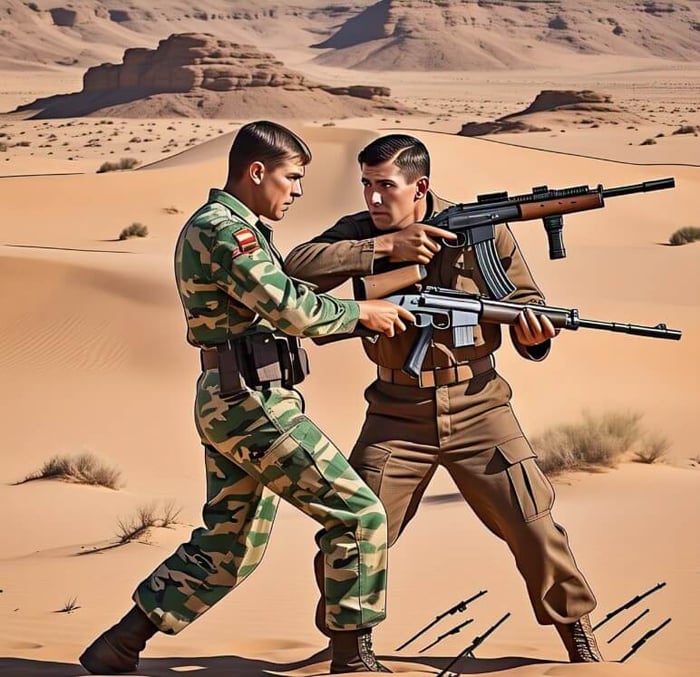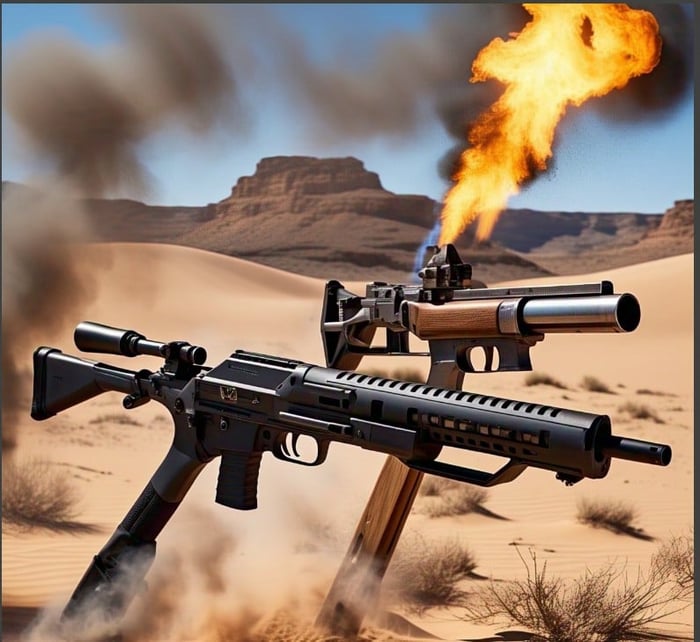When selecting the appropriate rifle cartridge for target shooting or hunting, the battle of 25-06 vs 30-06 is one that is sure to bring about plenty of debate among fans. Both cartridges have existed for decades, winning over the hearts of hunters and shooters alike. But what's the better choice for you? In this report, we will demystify the difference in plain language, including their history, performance, application, and so forth. Whether you are an experienced hunter or just a newcomer, this piece will assist you in making a well-informed choice.
What Is the 25-06 vs 30-06 Debate All About?
The debate is about two of the most popular rifle cartridges that have very different characteristic 25-06 Remington and 30-06 Springfield both love well for their versatility, but they serve slightly different purposes. Let's look at what makes each cassette special and why comparison is important.
Short history of 25-06 against 30-06
To appreciate 25-06 versus 30-06, it is useful to understand where these cassettes originate.
The 25-06 Remington
The 25-06 Remington originated as a wildcat cartridge in the early 20th century. It was later standardized by Remington in 1969, but its beginnings trace back to the 1920s when gunsmiths necked the 30-06 Springfield case to fire a.257-inch bullet. This produced a flat-shooting, high-velocity cartridge well suited to varmint hunting and medium-sized game such as deer or antelope.
The 30-06 Springfield
The 30-06 Springfield, which was brought out in 1906, is perhaps the most legendary rifle cartridge of all time. It was originally created for military purposes by the U.S. Army but soon gained popularity among hunters due to its strength and versatility. The 30-06 can fire everything from small game to large beasts such as elk and moose, and hence it is a popular choice with many.
In the 25-06 vs 30-06 competition, the 30-06 enjoys longer heritage and wider application but the 25-06 brings special strengths for certain situations.
Key Differences Between
In contrasting 25-06 vs 30-06, various criteria enter into the equation: bullet size, speed, recoil, and purpose. Let's delineate them.
Bullet Size and Weight
The 25-06 Remington shoots a .257-inch caliber bullet, usually weighing between 75 and 120 grains. Due to its smaller bullet size, it is well-suited for long-range shooting with minimal recoil.
In comparison, the 30-06 Springfield shoots a .308-inch caliber bullet, ranging from 110 to 220 grains in weight. The heavier bullets provide the 30-06 with greater stopping power for bigger game.
In 25-06 vs 30-06, the 25-06 is suited for lighter game, and the 30-06 is best with heavier animals.
Velocity and Trajectory
The 25-06 is characterized by high velocity and a flat trajectory. With a 100-grain bullet, it can develop muzzle velocities of approximately 3,200 fps. This makes it a go-to choice for long-range varmint hunting or target shooting at smaller objects.
The 30-06, although slower, still records impressive velocities. A 150-grain bullet will usually exit the barrel at approximately 2,900 fps. It has heavier bullets that hold more energy at longer ranges, making it appropriate for large game.
In comparing 25-06 and 30-06, the 25-06 emerges victorious in flat shooting, although the 30-06 is even in energy retention.
Recoil Comparison
Recoil is a major consideration in 25-06 vs 30-06. The 25-06 has less recoil and is therefore better suited for beginners or for those who are sensitive to kick. A standard 25-06 rifle develops about 10-12 foot-pounds of recoil energy.
The 30-06, owing to its heavier projectiles, generates more recoil—typically 20-25 foot-pounds, depending on the load. This becomes apparent with prolonged shooting sessions.
If recoil is a concern to you, the battle tips in favor of the 25-06 for comfort.
Versatility and Game Compatibility
The 25-06 excels at varmint hunting (such as coyotes or prairie dogs) and medium-sized game (such as deer or antelope). Its lighter bullets and flatter trajectory make it an excellent choice for open country.
The 30-06, however, is a true all-rounder. It can take down everything from small game to large animals like elk, moose, or even bears with the right load. Its wide range of bullet weights makes it adaptable to almost any hunting scenario.
In the matchup, the 30-06 is more versatile, but the 25-06 is more specialized.
Practical Applications of
Now that we’ve covered the basics, let’s explore how the 25-06 vs 30-06 cartridges perform in real-world scenarios.
Hunting with 25-06 vs 30-06
Small Game and Varmints
For small game and varmints, the 25-06 is hard to beat. Its high velocity and light bullets deliver devastating energy to small targets without excessive damage to pelts. It’s a favorite for coyote or prairie dog hunting.
The 30-06 can be used for small game, but its heavier bullets are overkill for most varmints. You’d need to use lighter loads (e.g., 110-grain bullets) to avoid destroying the target.
In this 25-06 vs 30-06 scenario, the 25-06 is the clear winner.
Medium-Sized Game
For deer, antelope, or other similar game, both cartridges work well. The 25-06 is highly accurate with less meat damage due to lighter bullets. It's perfect for precision hunters.
The 30-06 also works well on medium game but carries more energy, which in turn can come in handy with heavier brush or a slightly bigger animal. However, it could create more tissue damage.
The argument here is a matter of hunting style—precision or power.
Big Game
When hunting big game such as elk, moose, or bears, the 30-06 is the way to go. Its heavier bullets (180-220 grains) give the stopping power required to ethically kill large animals. The 25-06 can suffice for smaller elk or black bears, but it's at its limit.
In the showdown for large game, the 30-06 prevails.
Target Shooting and Long-Range Performance
The 25-06 is a favorite for target shooting because it has a flat trajectory and low recoil. It's simpler to remain on target for subsequent shots, and its high velocity makes it forgiving on long shots.
The 30-06 is also accurate at the range, but heavier recoil can tire shooters out eventually. It's a more suitable candidate for situations where energy delivery is more important than accuracy.
For target shooting in the competition, the 25-06 wins.
Ammunition Availability and Price
One consideration in the competition is ammunition availability and price.
25-06 Ammo
The 25-06 is not as popular as the 30-06, and therefore, finding ammunition can be more difficult, particularly in the countryside. Mainstream manufacturers such as Remington, Winchester, and Nosler make 25-06 ammunition, but there are fewer loads available than with the 30-06. Prices range from $1.50 to $3 per round, depending on the manufacturer and type of bullet.
30-06 Ammo
The 30-06 is perhaps the most common cartridge in the world. You can get it at nearly any gun store or big-box retailer. With hundreds of manufacturers making 30-06 ammo, you have a vast selection of bullet weights and types to choose from. It begins as low as $1 per round for plain loads and reaches up to $4 for high-end hunting ammo.
In terms of availability and options in the 25-06 vs 30-06, the 30-06 takes the win.
Rifle Choices for
Both cartridges are used in a range of rifles, from low-cost options to high-end ones.
25-06 Rifles
Popular 25-06 rifles include the Remington 700, Winchester Model 70, and Ruger American. The rifles are generally light, which makes them excellent for carrying in the field. They range from $400 for basic models to more than $1,500 for high-end models.
30-06 Rifles
The 30-06 is available in an even wider range of rifles, including the Remington 700, Winchester Model 70, Browning X-Bolt, and Savage 110. Because of its popularity, you’ll find 30-06 rifles in nearly every price range, from $350 to $2,000+.
In the 25-06 vs 30-06 rifle comparison, the 30-06 offers more options.
Reloading for
Reloading is an excellent means of saving dollars and tailoring your ammo. Let's examine how the 25-06 vs 30-06 holds up for reloaders.
Reloading 25-06
The 25-06 is easy to reload, as it shares the same parent case as the 30-06. Brass is easily sourced, and you can select many .257-inch bullets. Though the available bullets are less numerous than for the 30-06.
Reloading 30-06
The 30-06 is a dream to reload. Brass is plentiful, and the .308-inch bullet diameter is perhaps one of the most universal, with well over a hundred choices of bullets and weights. This makes it simpler to customize loads for particular hunting or shooting requirements.
The 30-06 is more versatile in the 25-06 vs 30-06 reloading competition.
Pros and Cons of 25-06 vs 30-06
Now let's encapsulate the advantages and disadvantages of both cartridges.
25-06 Pros and Cons
Pros:
Flat trajectory for long-distance shooting
Low recoil for comfortable shooting
Excellent for varmints and medium game
Minimal meat damage
Cons:
Limited ammo availability
Less versatile for big game
Fewer bullet options
30-06 Pros and Cons
Pros:
Highly versatile for all game sizes
Wide ammo availability
Extensive bullet variety
Proven track record
Cons:
Heavier recoil
Overkill for small game
Slightly steeper trajectory
In the 25-06 vs 30-06 showdown, your decision hinges on what matters most to you.
Which Cartridge Should You Choose?
Choosing between 25-06 vs 30-06 is a matter of your personal needs and wants.
Choose the 25-06 if:
You hunt varmints or medium-sized game.
You want low recoil and flat trajectories.
You shoot mostly in open country.
Choose the 30-06 if:
You hunt a broad variety of game, including large animals.
You desire maximum availability and choice of ammo.
You can handle moderate recoil.
Both cartridges are great, but the 25-06 vs 30-06 choice depends upon what means the most to you in a rifle cartridge.
Conclusion
The 25-06 vs 30-06 argument is an old one, and both cartridges have their place in the world of shooting. The 25-06 Remington is a niche cartridge that shines for varmint hunting and medium-sized game, with its flat shooting characteristics and minimal recoil. The 30-06 Springfield, by contrast, is a do-it-all powerhouse that can tackle almost any hunting situation, from small to large.
With knowledge of the disparity in performance, recoil, and application, you can select the cartridge most suited to your requirements. Whether your desire is for the accuracy of the 25-06 or the versatility of the 30-06, both are excellent choices for shooters and hunters.
FAQs About 25-06 vs 30-06
1. Is the 25-06 more accurate than the 30-06?
Both are very accurate, but the 25-06's flatter trajectory makes it preferable for long-range accuracy.
2. Is the 30-06 suitable for long-range shooting?
Yes, but the 30-06 does have a more vertical trajectory than the 25-06 and so is less well suited to very long distances.
3. Is the 25-06 or 30-06 preferable for deer hunting?
Both are great for deer, but the 25-06 does less damage to meat, and the 30-06 provides more punch for bigger deer or harsher conditions.
4. Is 25-06 ammunition less expensive than 30-06?
No, 30-06 ammunition is usually less expensive and more readily available than 25-06 ammunition.
This guide should make you feel confident in making your choice between 25-06 and 30-06. Good hunting!





